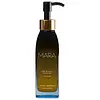What's inside
What's inside
 Key Ingredients
Key Ingredients

 Benefits
Benefits

 Concerns
Concerns

 Ingredients Side-by-side
Ingredients Side-by-side

Ethylhexyl Palmitate
EmollientCaprylic/Capric Triglyceride
MaskingIsohexadecane
EmollientSilica
AbrasiveTocopheryl Acetate
AntioxidantSqualane
EmollientTetrahexyldecyl Ascorbate
AntioxidantOlea Europaea Fruit Oil
MaskingMagnolia Officinalis Bark Extract
AntimicrobialCalcium Sodium Borosilicate
Mica
Cosmetic ColorantParfum
MaskingLimonene
PerfumingBenzyl Salicylate
PerfumingLinalool
PerfumingTin Oxide
AbrasiveCI 77891
Cosmetic ColorantIron Oxides
Ethylhexyl Palmitate, Caprylic/Capric Triglyceride, Isohexadecane, Silica, Tocopheryl Acetate, Squalane, Tetrahexyldecyl Ascorbate, Olea Europaea Fruit Oil, Magnolia Officinalis Bark Extract, Calcium Sodium Borosilicate, Mica, Parfum, Limonene, Benzyl Salicylate, Linalool, Tin Oxide, CI 77891, Iron Oxides
Helianthus Annuus Seed Oil
EmollientSqualane
EmollientRicinus Communis Seed Oil
MaskingCaprylic/Capric Triglyceride
MaskingMauritia Flexuosa Fruit Oil
Skin ConditioningCitrus Aurantium Bergamia Fruit Oil
MaskingLimonene
PerfumingCucumis Sativus Seed Oil
EmollientMoringa Oleifera Seed Oil
EmollientCitrus Grandis Peel Oil
MaskingCedrus Atlantica Bark Oil
MaskingPlankton Extract
Skin ConditioningSorbitan Trioleate
EmulsifyingLaminaria Digitata Extract
Skin ProtectingLaminaria Hyperborea Extract
Skin ProtectingTocopherol
AntioxidantApium Graveolens Seed Extract
AntioxidantLinum Usitatissimum Seed Extract
PerfumingAscorbyl Palmitate
AntioxidantLinalool
PerfumingCitral
PerfumingHelianthus Annuus Seed Oil, Squalane, Ricinus Communis Seed Oil, Caprylic/Capric Triglyceride, Mauritia Flexuosa Fruit Oil, Citrus Aurantium Bergamia Fruit Oil, Limonene, Cucumis Sativus Seed Oil, Moringa Oleifera Seed Oil, Citrus Grandis Peel Oil, Cedrus Atlantica Bark Oil, Plankton Extract, Sorbitan Trioleate, Laminaria Digitata Extract, Laminaria Hyperborea Extract, Tocopherol, Apium Graveolens Seed Extract, Linum Usitatissimum Seed Extract, Ascorbyl Palmitate, Linalool, Citral
Alternatives
Ingredients Explained
These ingredients are found in both products.
Ingredients higher up in an ingredient list are typically present in a larger amount.
This ingredient is an emollient, solvent, and texture enhancer. It is considered a skin-softener by helping the skin prevent moisture loss.
It helps thicken a product's formula and makes it easier to spread by dissolving clumping compounds.
Caprylic Triglyceride is made by combining glycerin with coconut oil, forming a clear liquid.
While there is an assumption Caprylic Triglyceride can clog pores due to it being derived from coconut oil, there is no research supporting this.
Learn more about Caprylic/Capric TriglycerideLimonene is a fragrance that adds scent and taste to a formulation.
It's found in the peel oil of citrus fruits and other plants such as lavender and eucalyptus. The scent of limonene is generally described as "sweet citrus".
Limonene acts as an antioxidant, meaning it helps neutralize free radicals.
When exposed to air, oxidized limonene may sensitize the skin. Because of this, limonene is often avoided by people with sensitive skin.
The term 'fragrance' is not regulated in many countries. In many cases, it is up to the brand to define this term. For instance, many brands choose to label themselves as "fragrance-free" because they are not using synthetic fragrances. However, their products may still contain ingredients such as essential oils that are considered a fragrance.
Learn more about LimoneneLinalool is a fragrance and helps add scent to products. It's derived from common plants such as cinnamon, mint, citrus, and lavender.
Like Limonene, this ingredient oxidizes when exposed to air. Oxidized linalool can cause allergies and skin sensitivity.
This ingredient has a scent that is floral, spicy tropical, and citrus-like.
Learn more about LinaloolSqualane is an emollient that helps the skin hold onto moisture. It's an oily liquid that occurs naturally in certain types of fish and plant oils.
Because squalane boosts hydration in the skin, it also comes with plenty of benefits: it is an antioxidant and can help fight free radicals and skin damage. Squalane is also found to have a detoxifying effect when applied.
Squalane comes from squalene, which occurs naturally within the sebum of our skin. It is one of the oils our skin produces to keep itself hydrated. Squalane is the hydrogenated version of squalene and has a longer shelf life.
Research shows that squalane is non-irritating (even at 100% concentration).
In general, it's a fantastic ingredient. It does a great job at hydrating the skin, and it's suitable for those with sensitive skin.
The source of squalane may impact malassezia / fungal acne. This is because olive oil derived squalane can contain impurities such as fatty acids and plant waxes. Sugarcane derived squalane is recommended for anyone with malassezia concerns.
Is squalane vegan?
This depends on the source. Squalane can be derived from both plants and animals. Most squalane used in skincare comes from plants.
Please note: the source of squalane is only known if disclosed by the brand. We recommend reaching out to the brand if you have any questions about their squalane.
Read more about squalene with an "e".
Is squalane an oil?
Squalane is often called an oil, but it’s technically not; it’s a hydrocarbon, meaning it’s only made of carbon and hydrogen, unlike true oils which are triglycerides made of fatty acids and glycerol.
The term “oil-free” isn’t regulated, so companies can define it however they want. Some exclude all oils, while others just avoid mineral oil or comedogenic oils.
While some people avoid oils thinking they cause breakouts, the right kind of oil (or oil-like ingredient like squalane) can actually help balance and hydrate your skin. It’s worth testing out simple oils or squalane to see what works best for your skin.
Learn more about Squalane